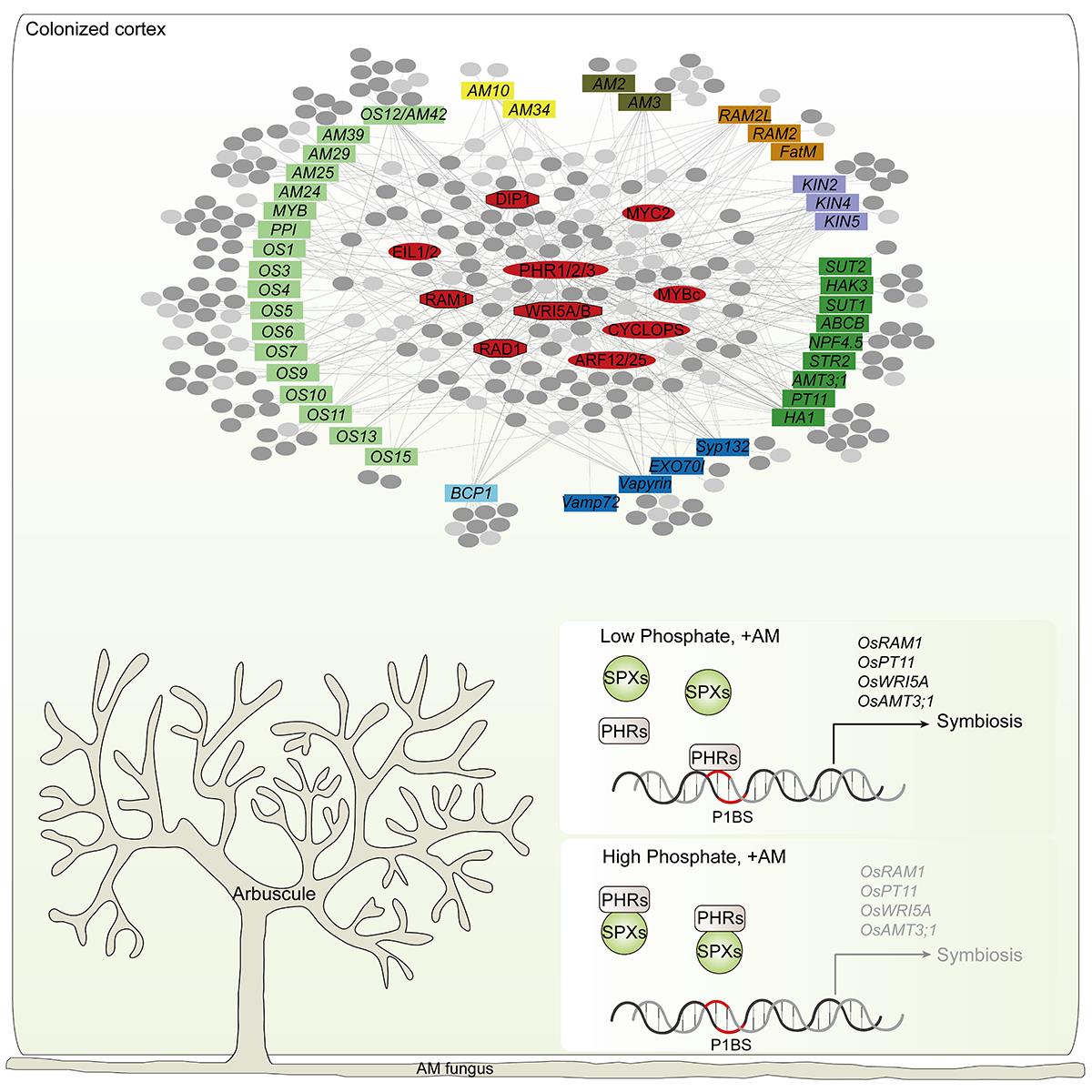“An Unexpected Discovery” Reveals a PHR-centered Network Regulates Mycorrhizal Symbiosis
Phosphorus is a macronutrient essential for plant growth and development. However, the majority of phosphorus in agricultural soil exists in the insoluble forms and unavailable for plants acquisition. Most plants have gained evolutionarily adaption to secure Pi acquisition: a direct uptake pathway via root hairs and epidermis, and an indirect uptake pathway through symbiosis with arbuscular mycorrhizal fungi. Interplay between these two Pi uptake pathways is essential in coordinating plant Pi uptake in response to varied Pi concentration in surrounding environment. The “self-regulatory” nature of AM symbiosis has been proposed 50 years ago, but the mechanism remains unknown.
Recently, a research group led by Prof. Wang Ertao from CAS Center for Excellence in Molecular Plant Science, mapped a PHR-centered AM symbiosis transcriptional regulatory network in rice, which connects the indirect mycorrhizal phosphate uptake pathway with the direct phosphate uptake pathway.
In this study, the researchers using yeast one hybrid screen mapped a regulatory network of 266 transcription factors and promoters of 47 mycorrhiza-related genes, highlighting that PHRs function as the central regulator in AM symbiosis. PHRs are recognized as a central transcriptional regulator that is required to activate specific response in Pi limited conditions. Further study showed that OsPHR2 directly regulated the expression of AM specific transcription factor OsWRI5A, OsRAM1 and transporter OsPT11, OsAMT3;1. The significant decreased mycorrhizal colonization level in Osphr2 mutants and almost blocked colonization in Osphr1/2/3 triple mutant demonstrate the critical role of OsPHR1/2/3 in AM symbiosis.
Further study found that phosphate sensor, SPX proteins, which function as suppressor of PHRs activity, negatively regulate AM symbiosis. Moreover, overexpression of OsPHR2 and Osspx1/2/3/5 quadruple mutants attenuate high Pi inhibition on AM symbiosis demonstrate that Pi fertilization inhibit AM symbiosis partially through PHR-SPX module.
This work was published online in Cell entitle “A phosphate Starvation Response (PHR)-centered network regulates mycorrhizal symbiosis” on 12 10 2021.
The work was supported by National Science Foundation, CAS Project for Young Scientists in Basic Research, the Strategic Priority Research Program “Molecular Mechanism of Plant Growth and Development” of the Chinese Academy of Sciences, National Key R&D Program of China.
OsPHR-centered network controls arbuscular mycorrhizal symbiosis
Contact:
Prof. Ertao Wang
National Key Laboratory of Plant Molecular Genetics, Center for Excellence in Molecular Plant Sciences (CEMPS), Chinese Academic of Sciences
Tel: 86-21-54924081
Email:etwang@cemps.ac.cn
